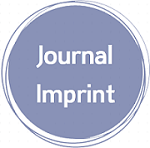A Physics Modeling Study of COVID-19 Transport in Air
Downloads
Objectives: Health threat from COVID-19 airborne infection has become a public emergency of international concern. During the ongoing coronavirus pandemic, people have been advised by the Centers for Disease Control and Prevention to maintain social distancing of at least 2 m to limit the risk of exposure to the coronavirus. Experimental data, however, show that infected aerosols and droplets trapped inside a turbulent puff cloud can travel 7 to 8 m. We carry out a physics modeling study for COVID-19 transport in air. Methodology: We propose a nuclear physics analogy-based modeling of the complex gas cloud and its payload of pathogen-virions. We estimate the puff effective stopping range adapting the high-energy physics model that describes the slow down of ?-particles (in matter) via interactions with the electron cloud. Analysis Findings: We show that the cloud stopping range is proportional to the diameter of the puff times its density. We use our puff model to determine the average density of the buoyant fluid in the turbulent cloud. A fit to the experimental data yields , where and are the average density of the puff and the air. We demonstrate that temperature variation could cause an O (? ±8%) effect in the puff stopping range for extreme ambient cold or warmth. We also demonstrate that aerosols and droplets can remain suspended for hours in the air. Therefore, once the puff slows down sufficiently, and its coherence is lost, the eventual spreading of the infected aerosols becomes dependent on the ambient air currents and turbulence.
Downloads
Huang, Chaolin, Yeming Wang, Xingwang Li, Lili Ren, Jianping Zhao, Yi Hu, Li Zhang, et al. “Clinical Features of Patients Infected with 2019 Novel Coronavirus in Wuhan, China.” The Lancet 395, no. 10223 (February 2020): 497–506. doi:10.1016/s0140-6736(20)30183-5.
Zhou, Peng, Xing-Lou Yang, Xian-Guang Wang, Ben Hu, Lei Zhang, Wei Zhang, Hao-Rui Si, et al. “A Pneumonia Outbreak Associated with a New Coronavirus of Probable Bat Origin.” Nature 579, no. 7798 (February 3, 2020): 270–273. doi:10.1038/s41586-020-2012-7.
Zhu, Na, Dingyu Zhang, Wenling Wang, Xingwang Li, Bo Yang, Jingdong Song, Xiang Zhao, et al. “A Novel Coronavirus from Patients with Pneumonia in China, 2019.” New England Journal of Medicine 382, no. 8 (February 20, 2020): 727–733. doi:10.1056/nejmoa2001017.
Tang, Xiaolu, Changcheng Wu, Xiang Li, Yuhe Song, Xinmin Yao, Xinkai Wu, Yuange Duan, et al. “On the Origin and Continuing Evolution of SARS-CoV-2.” National Science Review 7, no. 6 (March 3, 2020): 1012–1023. doi:10.1093/nsr/nwaa036.
Rothe, Camilla, Mirjam Schunk, Peter Sothmann, Gisela Bretzel, Guenter Froeschl, Claudia Wallrauch, Thorbjörn Zimmer, et al. “Transmission of 2019-nCoV Infection from an Asymptomatic Contact in Germany.” New England Journal of Medicine 382, no. 10 (March 5, 2020): 970–971. doi:10.1056/nejmc2001468.
Shiu, Eunice Y.C., Nancy H.L. Leung, and Benjamin J. Cowling. “Controversy Around Airborne Versus Droplet Transmission of Respiratory Viruses.” Current Opinion in Infectious Diseases 32, no. 4 (August 2019): 372–379. doi:10.1097/qco.0000000000000563.
Ong, Sean Wei Xiang, Yian Kim Tan, Po Ying Chia, Tau Hong Lee, Oon Tek Ng, Michelle Su Yen Wong, and Kalisvar Marimuthu. “Air, Surface Environmental, and Personal Protective Equipment Contamination by Severe Acute Respiratory Syndrome Coronavirus 2 (SARS-CoV-2) From a Symptomatic Patient.” JAMA 323, no. 16 (April 28, 2020): 1610. doi:10.1001/jama.2020.3227.
Santarpia, Joshua L, Danielle N Rivera, Vicki Herrera, M. Jane Morwitzer, Hannah Creager, George W. Santarpia, Kevin K Crown, et al. “Aerosol and Surface Transmission Potential of SARS-CoV-2” (March 26, 2020). doi:10.1101/2020.03.23.20039446.
Liu, Yuan, Zhi Ning, Yu Chen, Ming Guo, Yingle Liu, Nirmal Kumar Gali, Li Sun, et al. “Aerodynamic Analysis of SARS-CoV-2 in Two Wuhan Hospitals.” Nature 582, no. 7813 (April 27, 2020): 557–560. doi:10.1038/s41586-020-2271-3.
Cai, Jing, Wenjie Sun, Jianping Huang, Michelle Gamber, Jing Wu, and Guiqing He. “Indirect Virus Transmission in Cluster of COVID-19 Cases, Wenzhou, China, 2020.” Emerging Infectious Diseases 26, no. 6 (June 2020): 1343–1345. doi:10.3201/eid2606.200412.
Guo, Zhen-Dong, Zhong-Yi Wang, Shou-Feng Zhang, Xiao Li, Lin Li, Chao Li, Yan Cui, et al. “Aerosol and Surface Distribution of Severe Acute Respiratory Syndrome Coronavirus 2 in Hospital Wards, Wuhan, China, 2020.” Emerging Infectious Diseases 26, no. 7 (July 2020): 1583–1591. doi:10.3201/eid2607.200885.
Van Doremalen, Neeltje, Trenton Bushmaker, Dylan H. Morris, Myndi G. Holbrook, Amandine Gamble, Brandi N. Williamson, Azaibi Tamin, et al. “Aerosol and Surface Stability of SARS-CoV-2 as Compared with SARS-CoV-1.” New England Journal of Medicine 382, no. 16 (April 16, 2020): 1564–1567. doi:10.1056/nejmc2004973.
Wölfel, Roman, Victor M. Corman, Wolfgang Guggemos, Michael Seilmaier, Sabine Zange, Marcel A. Müller, Daniela Niemeyer, et al. “Virological Assessment of Hospitalized Patients with COVID-2019.” Nature 581, no. 7809 (April 1, 2020): 465–469. doi:10.1038/s41586-020-2196-x.
Jones, Terry C, Barbara Mühlemann, Talitha Veith, Guido Biele, Marta Zuchowski, Jörg Hoffmann, Angela Stein, Anke Edelmann, Victor Max Corman, and Christian Drosten. “An Analysis of SARS-CoV-2 Viral Load by Patient Age” (June 9, 2020). doi:10.1101/2020.06.08.20125484.
Bourouiba, Lydia. “A Sneeze.” New England Journal of Medicine 375, no. 8 (August 25, 2016): e15. doi:10.1056/nejmicm1501197.
Bourouiba, Lydia, Eline Dehandschoewercker, and John W. M. Bush. “Violent Expiratory Events: On Coughing and Sneezing.” Journal of Fluid Mechanics 745 (March 24, 2014): 537–563. doi:10.1017/jfm.2014.88.
Scharfman, B. E., A. H. Techet, J. W. M. Bush, and L. Bourouiba. “Visualization of Sneeze Ejecta: Steps of Fluid Fragmentation Leading to Respiratory Droplets.” Experiments in Fluids 57, no. 2 (January 20, 2016). doi:10.1007/s00348-015-2078-4.
Bourouiba, Lydia. “Turbulent Gas Clouds and Respiratory Pathogen Emissions.” JAMA (March 26, 2020). doi:10.1001/jama.2020.4756.
Anchordoqui, Luis Alfredo, and Eugene M. Chudnovsky. “A Physicist View of COVID-19 Airborne Infection through Convective Airflow in Indoor Spaces.” SciMedicine Journal 2 (August 28, 2020): 68–72. doi:10.28991/scimedj-2020-02-si-5.
Gralton, Jan, Euan Tovey, Mary-Louise McLaws, and William D. Rawlinson. “The Role of Particle Size in Aerosolised Pathogen Transmission: A Review.” Journal of Infection 62, no. 1 (January 2011): 1–13. doi:10.1016/j.jinf.2010.11.010.
Xie, X., Y. Li, A. T. Y. Chwang, P. L. Ho, and W. H. Seto. “How Far Droplets Can Move in Indoor Environments ? Revisiting the Wells Evaporation?falling Curve.” Indoor Air 17, no. 3 (June 2007): 211–225. doi:10.1111/j.1600-0668.2007.00469.x.
Wei, Jianjian, and Yuguo Li. “Airborne Spread of Infectious Agents in the Indoor Environment.” American Journal of Infection Control 44, no. 9 (September 2016): S102–S108. doi:10.1016/j.ajic.2016.06.003.
Cole, Eugene C., and Carl E. Cook. “Characterization of Infectious Aerosols in Health Care Facilities: An Aid to Effective Engineering Controls and Preventive Strategies.” American Journal of Infection Control 26, no. 4 (August 1998): 453–464. doi:10.1016/s0196-6553(98)70046-x.
Duguid, J. P. “The Size and the Duration of Air-Carriage of Respiratory Droplets and Droplet-Nuclei.” Epidemiology and Infection 44, no. 6 (September 1946): 471–479. doi:10.1017/s0022172400019288.
Yang, Shinhao, Grace W.M. Lee, Cheng-Min Chen, Chih-Cheng Wu, and Kuo-Pin Yu. “The Size and Concentration of Droplets Generated by Coughing in Human Subjects.” Journal of Aerosol Medicine 20, no. 4 (December 2007): 484–494. doi:10.1089/jam.2007.0610.
Balachandar, S., S. Zaleski, A. Soldati, G. Ahmadi, and L. Bourouiba. “Host-to-Host Airborne Transmission As a Multiphase Flow Problem For Science-Based Social Distance Guidelines.” International Journal of Multiphase Flow (September 2020): 103439. doi:10.1016/j.ijmultiphaseflow.2020.103439.
Morton, B. R. Taylor, G. I. & Turner, J. S. “Turbulent Gravitational Convection from Maintained and Instantaneous Sources.” Proceedings of the Royal Society of London. Series A. Mathematical and Physical Sciences 234, no. 1196 (January 24, 1956): 1–23. doi:10.1098/rspa.1956.0011.
Wells, William F. "On air-borne infection. Study II. Droplets and droplet nuclei." American Journal of Hygiene 20 (1934): 611-18.
Augenbraun, Benjamin L., Zack D. Lasner, Debayan Mitra, Sridhar Prabhu, Shivam Raval, Hiromitsu Sawaoka, and John M. Doyle. “Assessment and Mitigation of Aerosol Airborne SARS-CoV-2 Transmission in Laboratory and Office Environments.” Journal of Occupational and Environmental Hygiene 17, no. 10 (September 22, 2020): 447–456. doi:10.1080/15459624.2020.1805117.
Evans, Matthew. “Avoiding COVID-19: Aerosol Guidelines” (May 25, 2020). doi:10.1101/2020.05.21.20108894.
Crowder, Timothy M., Jacky A. Rosati, Jeffry D. Schroeter, Anthony J. Hickey, and Ted B. Martonen. "Fundamental effects of particle morphology on lung delivery: predictions of Stokes' law and the particular relevance to dry powder inhaler formulation and development." Pharmaceutical research 19, no. 3 (2002): 239-245. doi:10.1023/A:1014426530935.
- This work (including HTML and PDF Files) is licensed under a Creative Commons Attribution 4.0 International License.












